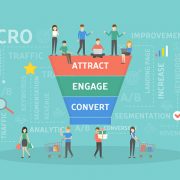How Email Newsletters Generate New Business

Email marketing is not something new. It has been since shortly after the invention of email itself. We all remember being copied and pasted on email threads of anyone and everyone they knew to send them some funny joke or chain letter. You would open them because you received it from a person, someone you know and like and trust. The key thing to note is that people open emails from people more than they do from brands.
According to the Data & Marketing Association, it takes between 7 to 13 touches to deliver a qualified lead. When an advisor’s goal is to generate leads, creating this many touch points can be time-consuming and costly. Email marketing has been proven to help develop trust and credibility by sending prospects and clients the right content at the right time that is relevant to them. Of all the marketing channels, email has been proven to generate the highest return on investment. There are case studies that walk through exactly how this can be done.
As an enterprise marketer, you most likely have an email distribution tool that you send emails to clients who have opted in to receive your emails. But what about all the people who have been researching your brand or all the people that are connected in one way or another to a financial advisor. Advisors are trying to leverage best practice email tools like MailChimp or Constant Contact to stay in touch with their network but these emails might not follow compliance rules and regulations.
By enabling advisors to email their clients and prospects through a compliant platform where messaging is approved, they can still create a personalized local approach. Their emails can reference local events, news, and tie them to articles they write.
When advisors adopt an email strategy, we see that email results are higher than the industry average, as well as corporate email newsletters. People tend to open more emails and be more engaged with by clicking and reading on multiple articles.
5 Reasons Why Email is a Must
- Nurture LeadsAdvisors most likely have contacts in their database that are not leads. In order to turn these prospects into clients one day, advisors need to be continuously nurturing them with expert advice and thought leadership. If they have not unsubscribed from the email list, that means they are still interested in hearing what you have to say.
- Learn about your Audience and let them Learn about youAs advisors write and distribute content they are building trust and credibility. Prospects and clients are getting to know who the advisor is and what their views and approach is to certain topics. On the flipside, as prospects and clients interact with email content by sharing and clicking on articles, the advisor learns what topics are of interest and relevant to their audience. This is important so advisors can write articles that their audience cares to read.
- Fill up your Calendar with AppointmentsEach time an email newsletter is sent out to an advisor’s community, there is an opportunity to book appointments with clients or prospects. A client could call or email to book an appointment after reading an article. Similarly, an article might spark some interest with a prospect that could result in a booked meeting. Every digital interaction with a prospect could bring them one step closer to making initial contact.
- Keep in Touch with Past ClientsSometimes there are circumstances that take place where an advisor might lose clients. Some scenarios could be moving to a new city. With these older clients, there is an opportunity for referrals that shouldn’t be ignored.
- Reach a Wider AudienceWith new technology, it’s very easy for people to share contact they consume. Though email it can be easily shared on social media channels or forwarded to someone new.
In conclusion, the successful savvy advisor is already doing some version of this already. If you are not currently taking advantage of the opportunity to email customers you are missing out on ways to connect your audience. Remember, if clients and prospects are not getting information from advisors, they are likely going to get it from someone else or somewhere else.







